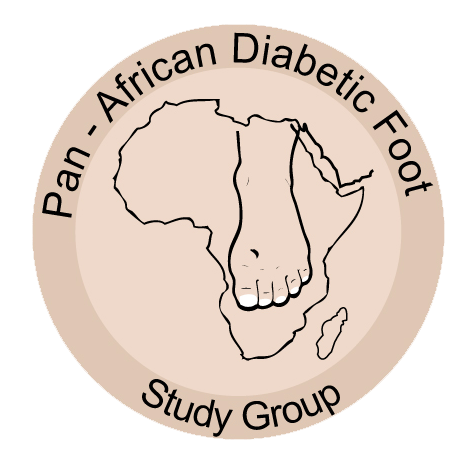
Pan-African Diabetic Foot Study Group (PADFSG)
Step by Step Project On Foot Care
INDIA

Chairman: Dr. Sharad Pendsey
Our Goal :
Our patients with high risk feet are walking step-by-step towards the road to amputation and by implementing this project we wish to take them around step-by-step to the road of safety.
Project at a Glance: Project was launched in 2004
100 teams of doctors and nurses working with the same doctor were selected for training in diabetes foot care (India (94), Bangladesh (3), Sri Lanka (2), Nepal (1) .
They were offered a 2 day Basic Course in 2004 followed by a 2 day Advanced Course in 2005.
It was compulsory for the team to attend both the basic and the Advanced course. Teams had to give undertaking.
A National and International faculty of experienced educators in the field were responsible for teaching and demonstrating practical sessions.
Emphasis was given on live case demonstration, hands on experience and practical problem solving.
Delegates were provided a set of podiatry instruments, educational material specially prepared for this project like patient educational booklets
and video for patient education and for Health care professionals and the book Diabetic Foot – A Clinical Atlas
Attending delegates were trained in preventative diabetic foot care.
• Primary prevention: screening of high-risk feet and proper advice on preventive footwear.
• Secondary prevention: management of trivial foot lesions like callus removal, treatment of nail pathologies, de-roofing blisters.
• Tertiary prevention: prompt referral to specialist for advanced foot lesions.
Impact
Regular screening programs
Patient education
Management of trivial foot lesions
Reduction in amputation
Cascading effect
To be rolled out in the rest of developing world
Results
The data was collected by a questionnaire sent to all participating delegates and results of 1st year after the basic course and 2nd year after the advanced course were evaluated.
85 teams, from India, responded to the questionnaire for both the years. From the overview of the work carried out by the delegates it was apparent that there was a significant increase in every activity they conducted in the second year, over the first year.
In the absence of any formal training in diabetes foot care, about 20% of patients with trivial foot lesions would be expected to have lower extremity amputation.
Thus, with appropriate treatment of trivial foot lesions in the 1st year, at least 900 lower limbs and in the 2nd year 1943 limbs were salvaged by the participants of the Step by Step foot care project.
Conclusions
